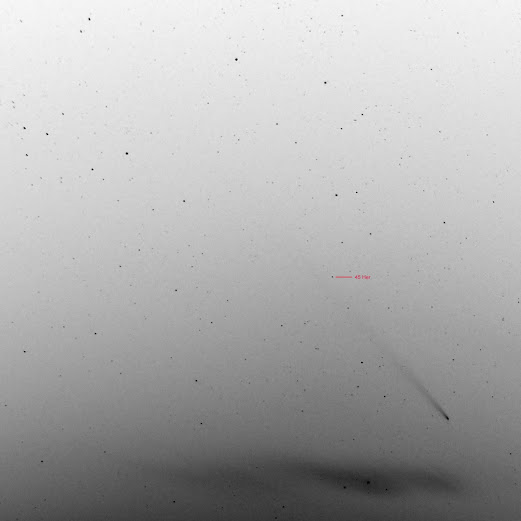I have been carrying on with my variable star observations (these are mostly pulsating variables). The evening of the 23rd October was one day before last quarter and the Moon wouldn't rise until 21:11 UT. Astronomical twilight ended at about 18:40 UT. The skies were clear but the transparency wasn't great.
Here are my observations:-
TX Dra, 19:25 UT, chart 106.04, S(2)V(1)K, mag.6.9
AH Dra, 19:40 UT, chart 106.04, 2(3)V(2)6, mag. 7.6
CH Cyg, 20:08 UT, chart 089.04, A(1)V(3)W, mag. 6.7
Z Uma, 20:33 UT, chart 217.02, =C, mag.7.5
On the night of the 25th November, a month later, the Moon was 2 days past last quarter and wouldn't rise until 02:21 UT. Astronomical twilight ended at about 18:00 UT. The sky transparency was average. One of the mistakes I made was to assume that it was still British Summer Time and so I recorded my observation times as an hour earlier than they should have been. Fortunately, I saw my mistake and corrected it. Here are the observations:-
CH Cyg, 18:40 UT, chart 089.04, =A, mag. 6.5
TX Dra, 19:07 UT, chart 106.04, =N, mag. 7.7
AH Dra, 19:15 UT, chart 106.04, =6, mag. 7.8
RW Cep, 22:17 UT, chart 312.02, B(1)V(3)E, mag. 6.7
W Cep, 22:23 UT, chart 312.02, D(4)V(1)F, mag. 7.4
GO Peg, 22:50 UT, chart 103.02, B(3)V(1)E, mag. 7.6
Z Uma, 23:21 UT, chart 217.02, =B, mag. 7.3
A few nights ago on the 29th November it was 2 days before new moon. Astronomical twilight ended about 18:00 UT and the sky transparency was good. Before this observing session I was looking for some new variable stars to observe to add to my roster. The ones in Cygnus below were the first of these. I also had a go at AC Herculis which I hadn't observed since 2023.
AC Her, 19:19 UT, chart 048.4, D(1)V(1)E, mag. 7.8
AF Cyg, 21:51 UT, chart 232.02, =Q, mag. 7.6
V973 Cyg, 22:02 UT, chart 232.02, =F, mag. 6.7
All seen with 10x50 binoculars.
All text and images © Duncan Hale-Sutton 2024

.jpg)

.jpg)

.jpg)





